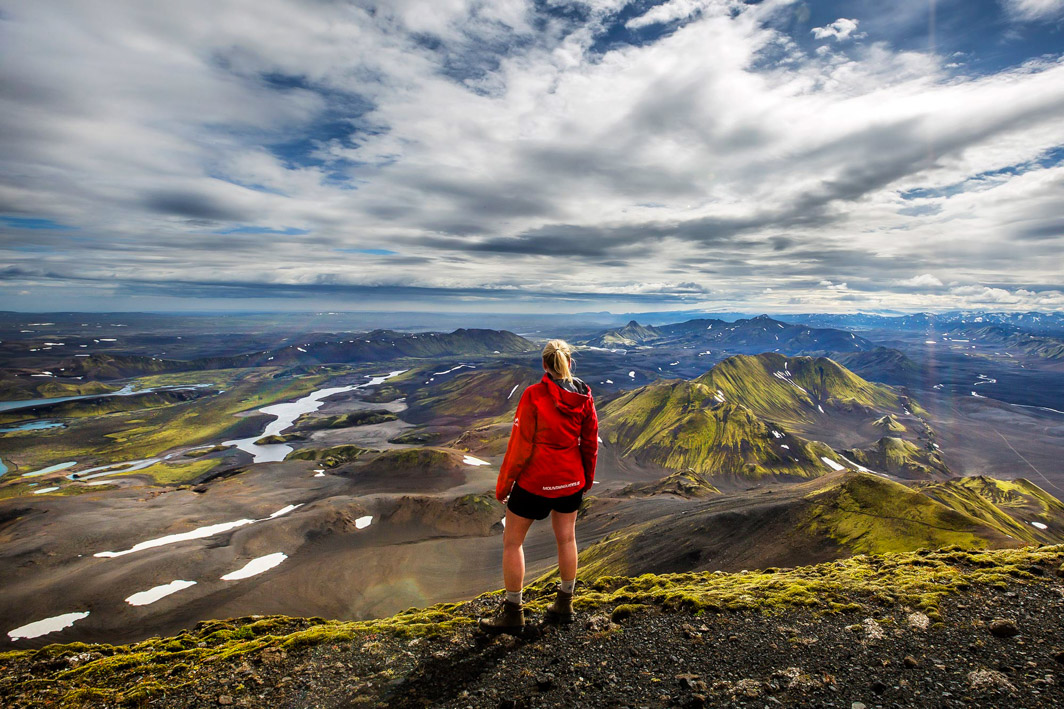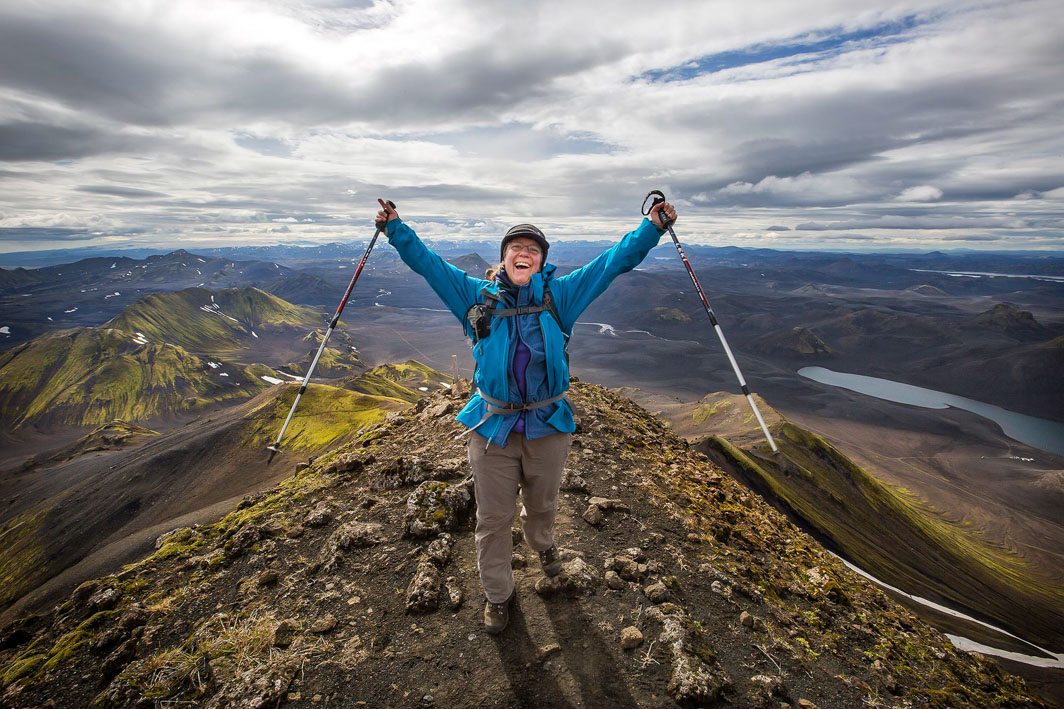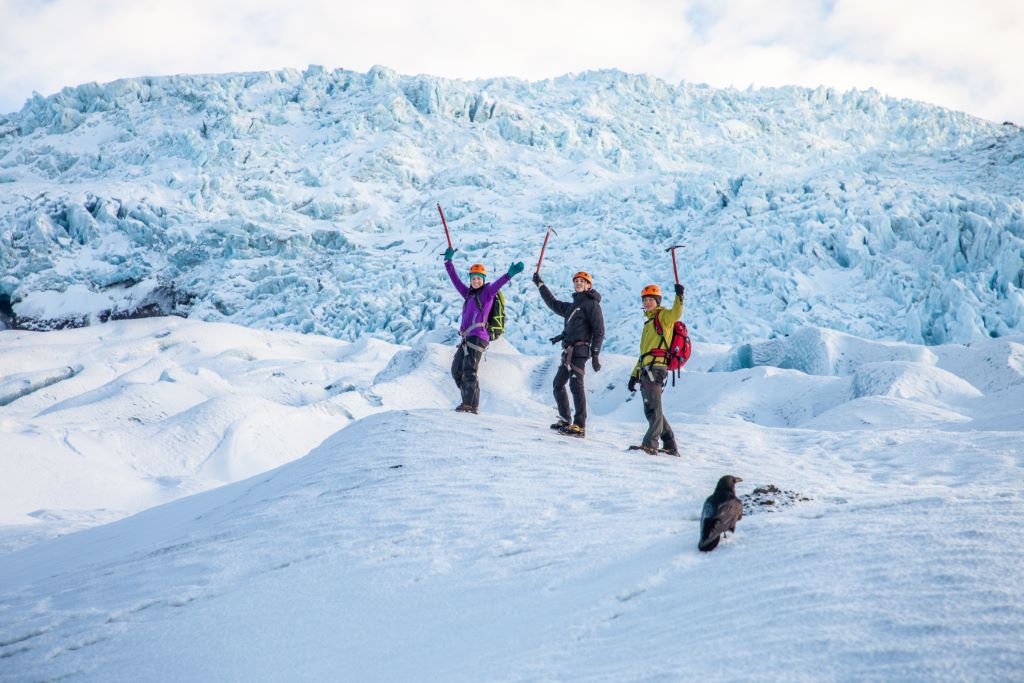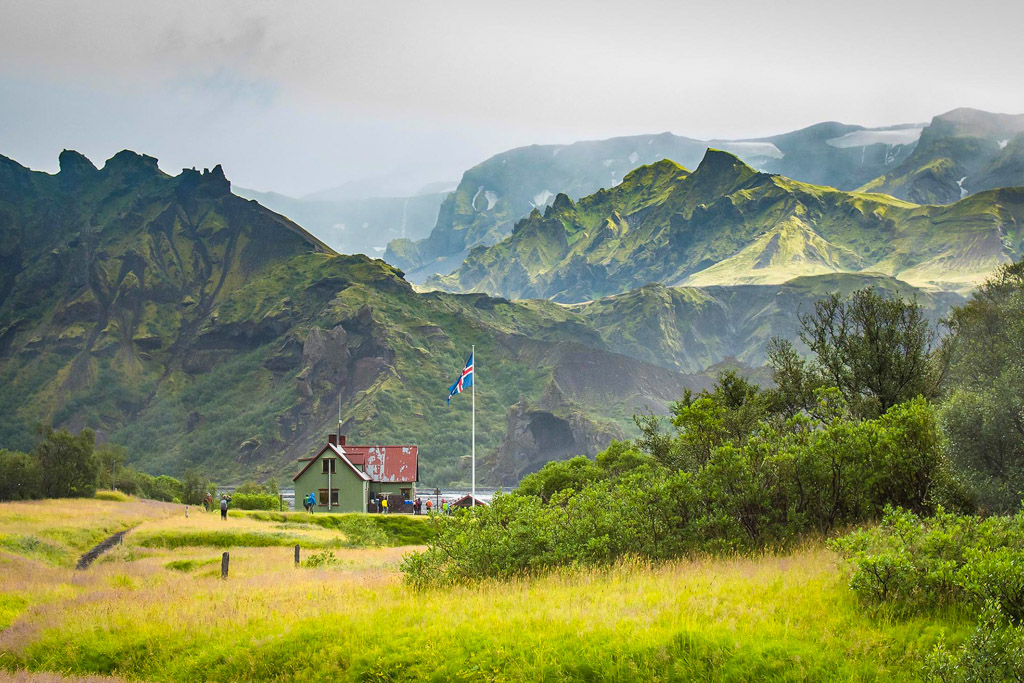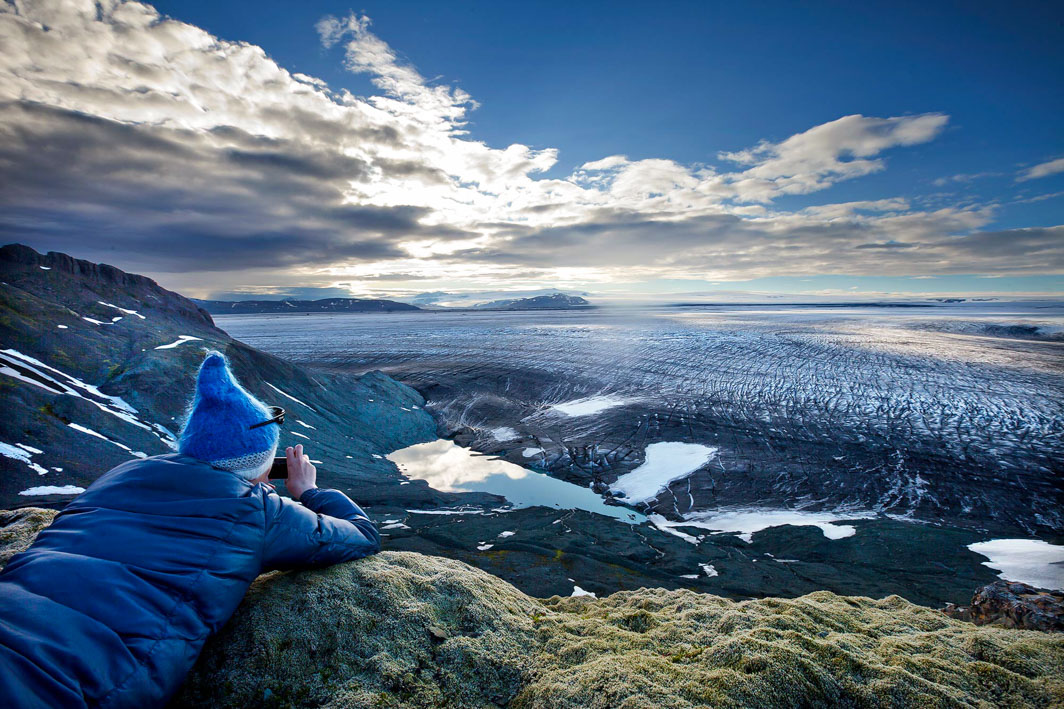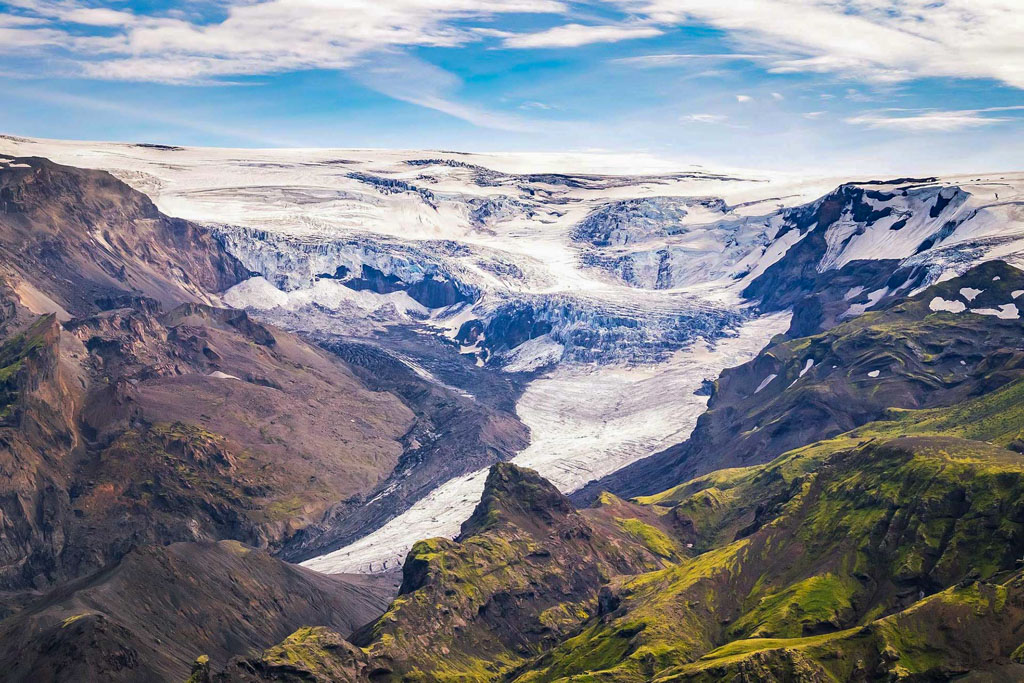Safety and precautions while hiking in Iceland
- Make sure you are properly dressed for the changeable weather and cold and windy conditions - wear layers, with a thermal underlayer, sturdy waterproof boots and jacket. Add a hat and gloves.
- Always carry a compass and map - and learn how to use them.
- Check the local weather forecast before setting out.
- Download safetravel.is to get up-to-date reports on the weather as well as road and trail closures.
- If you are walking alone, always leave your route with your accommodation.
- Never set out without water, food and a first-aid kit and phone GPS
- If you are an inexperienced hiker, book a guided tour for peace of mind
Your questions answered
What is the best month to hike in Iceland?
From May to September you can book superb treks with Icelandic Mountain guides. June, July and August are the optimal months.
What is the toughest hike in Iceland?
There are many hikes that will challenge the most adventurous hikers. Test your mettle with an ascent of Iceland’s highest peak, Hvannadalshnjúkur or the alpine trekking route up the four peaks of Hrútsfjallstindar. Or how about the Three Peak Challenge of Vörðuskeggi, Eyjafjallajökull Glacier and Hvannadalshnúkur? Alternatively, hike the largest glacier in Europe or ski across the Highlands at Sprengisandur. Take your pick!
Can you hike in Iceland without a guide?
It depends where you’re hiking. Do your research. You'll need a guide if you’re climbing difficult mountain routes or traversing dangerous glaciers. For inexperienced trekkers, always book a tour. Alternatively, allow Icelandic Mountain Guides to do all the work by providing you with a guided hike.
Is Iceland's glacier hiking worth it?
Absolutely. Surrounded by beautiful scenery, it’s a fantastic experience. In the care of an experienced guide, you’ll find an otherworldly environment of deep crevasses, sparkling hues of blue and white, crazy ice formations, and an expanse of ice dazzles the eyes.
Should I wear hiking boots in Iceland?
Yes, yes, and yes! The mountain terrain is rocky, wet, or covered in ice and snow. You’ll also want good support for your ankles on uneven ground and sloping hillsides. Wear a thick pair of socks under your boots for maximum comfort.
Can you wear sneakers for hiking in Iceland?
Unless you’re walking a short distance in Reykjavík, sneakers are not suitable. Hiking requires strong waterproof boots across all four seasons.
What are the easiest hikes?
You don’t have to be a mountain goat to experience Iceland’s awe-inspiring landscapes. Take an easy guided glacier hike on Sólheimajökull, a stroll up to the Steinn (rock) at Esja, just ten kilometres from Reykjavik, or trek along the wonderful Hot River of Reykjadalur, finishing with a soak in the geothermal pools.
How difficult is the hike to Fagradalsfjall?
For inexperienced walkers, the route to the recently active volcano is challenging; for more experienced hikers only moderately difficult. Loose gravel and rocks make going underfoot tricky, and the terrain is steep.
Is there still lava in Fagradalsfjall?
Although the lava is no longer flowing, it’s still hot, and caution should be taken. The way is sign-posted, so stick to the paths, and you can still experience the smoking lava fields in all their eerie magnificence from a safe distance.
Do you need a tour to see Fagradalsfjall?
If you’re an inexperienced hiker, it’s best to take a tour, and you’ll have the knowledge of a local guide. For more experienced hikers, you can do it yourself.
How many days is enough for Iceland?
No amount of days is ever enough in Iceland! But if - like most of us - you’re restricted to a handful of days, there are plenty of options for short hikes close to the capital or on the Golden Circle with waterfalls and hot springs. If you’ve two or three weeks, the options on Iceland’s Ring Road (circumnavigating the whole island) are endless. To experience the best long-distance hikes in the Highlands, build in multiple days for your trek.





























